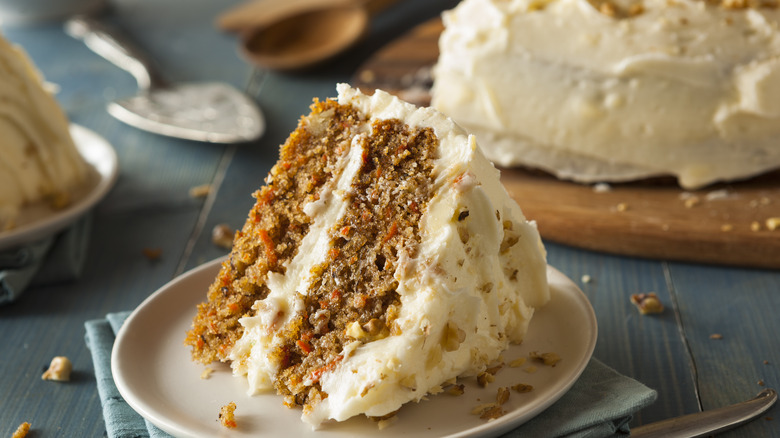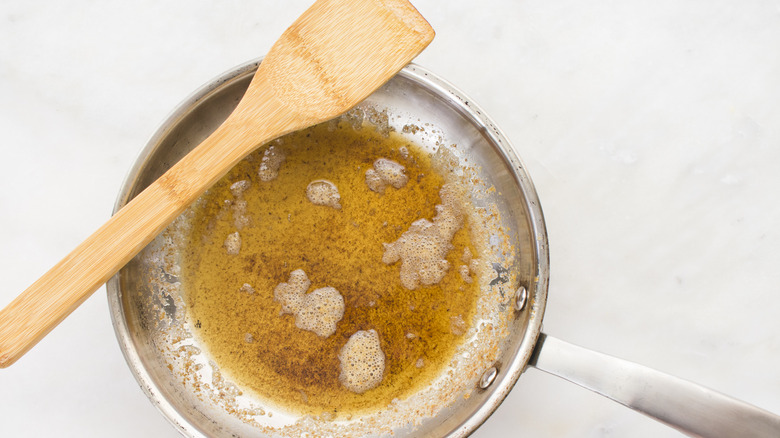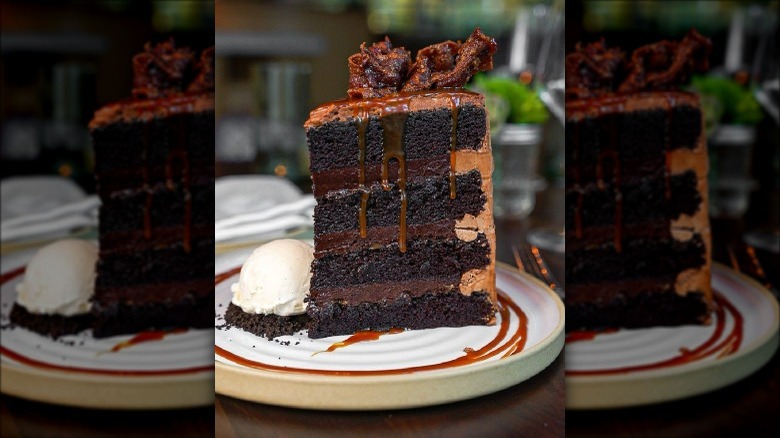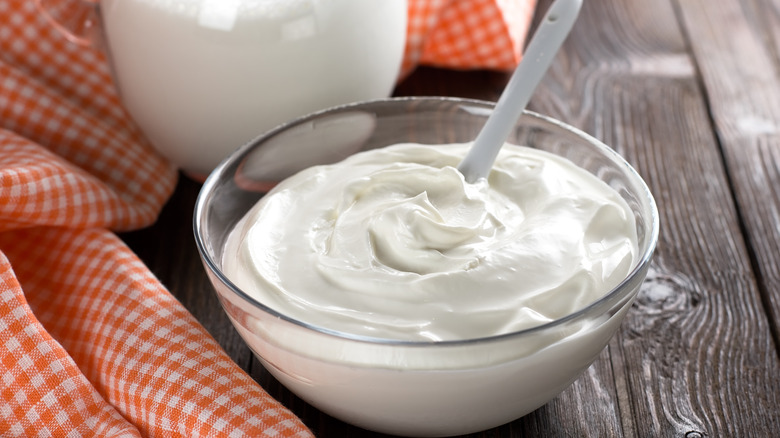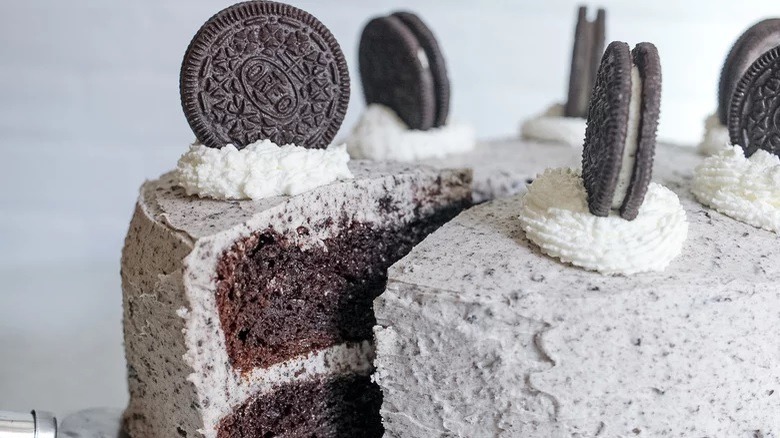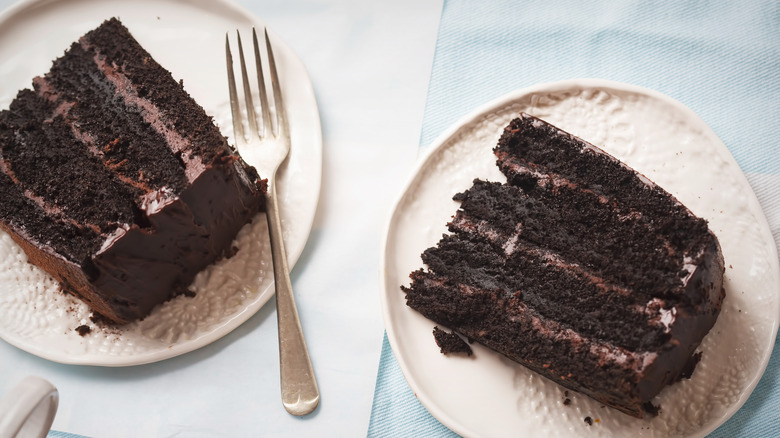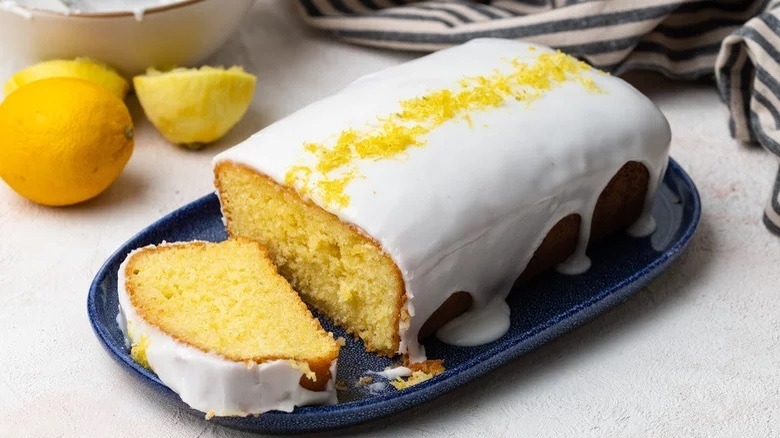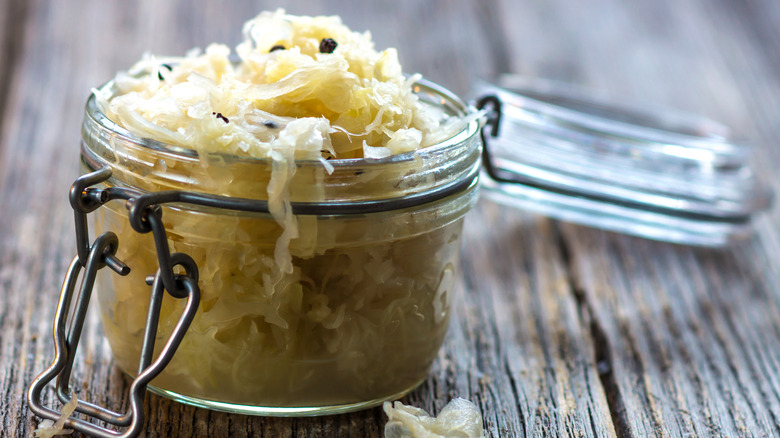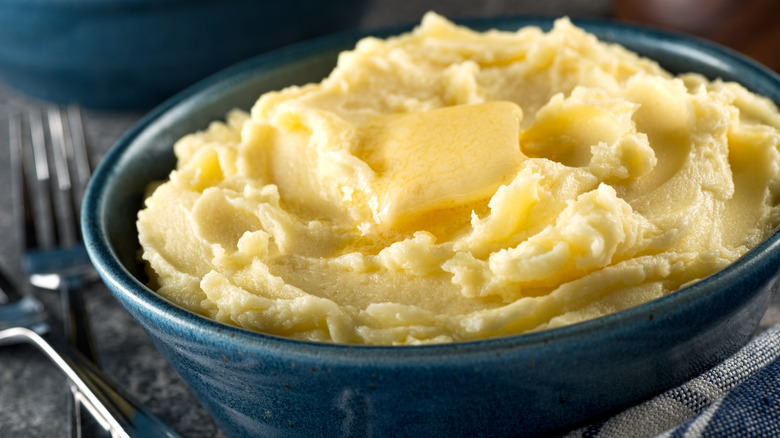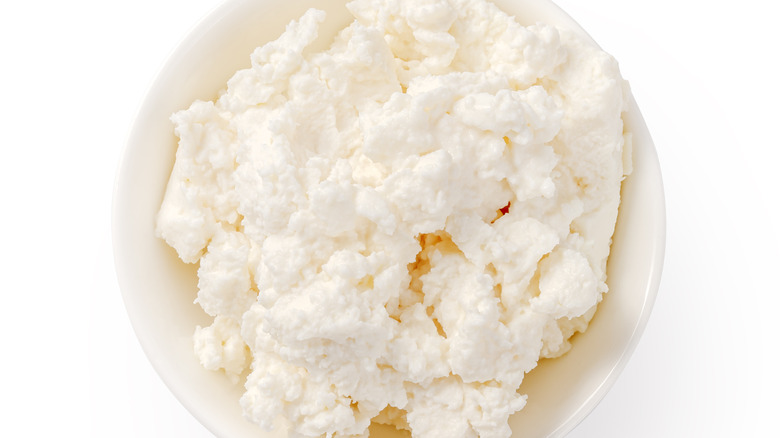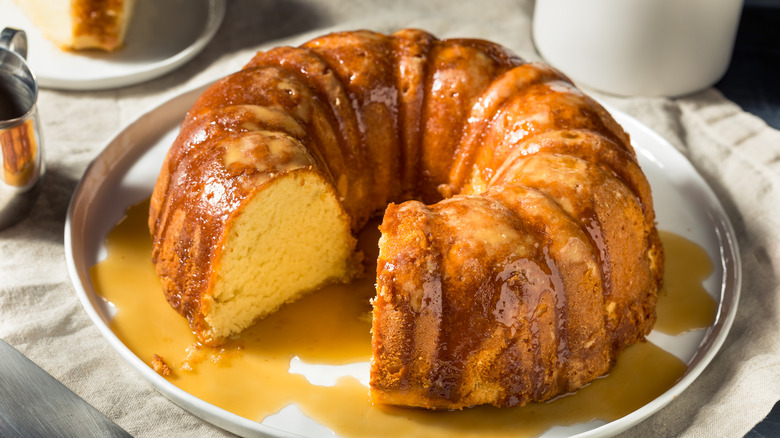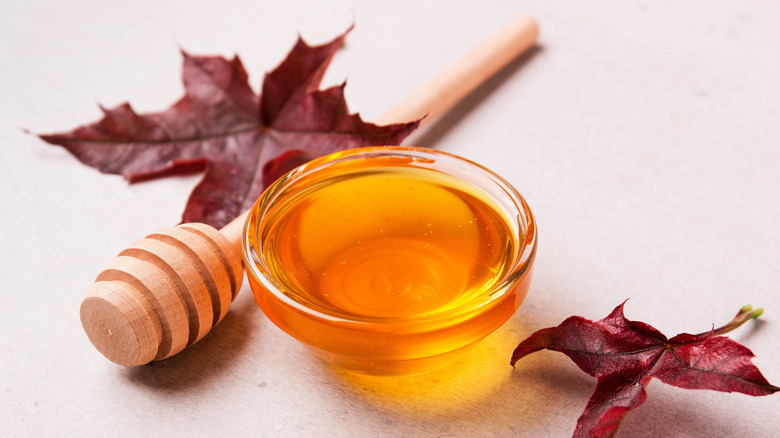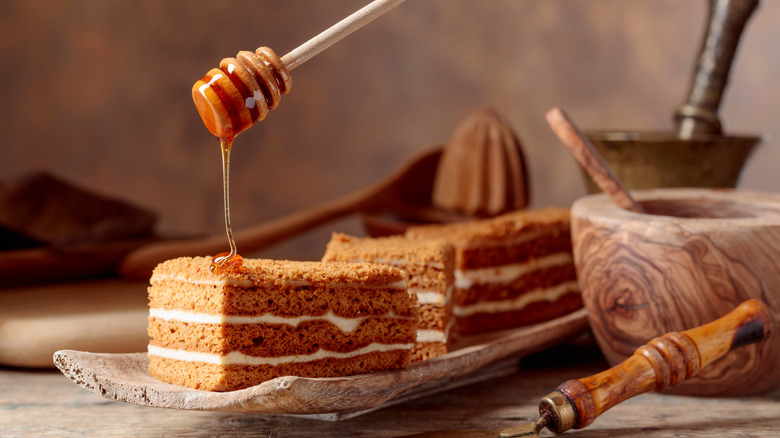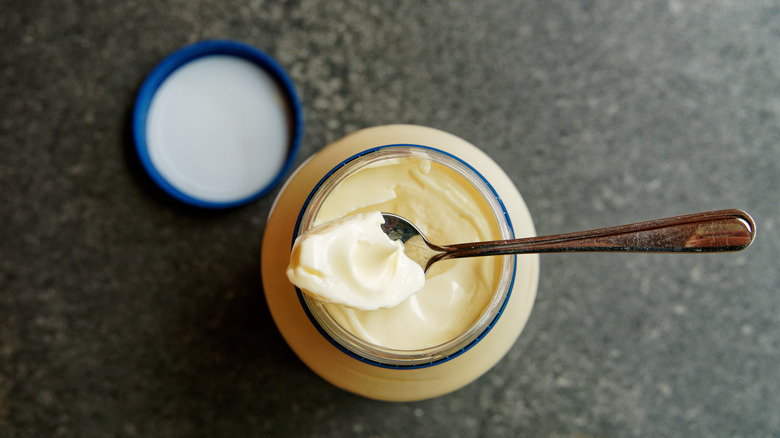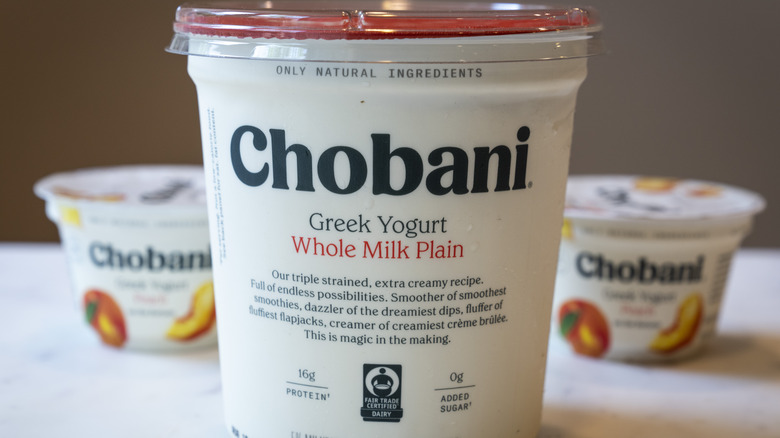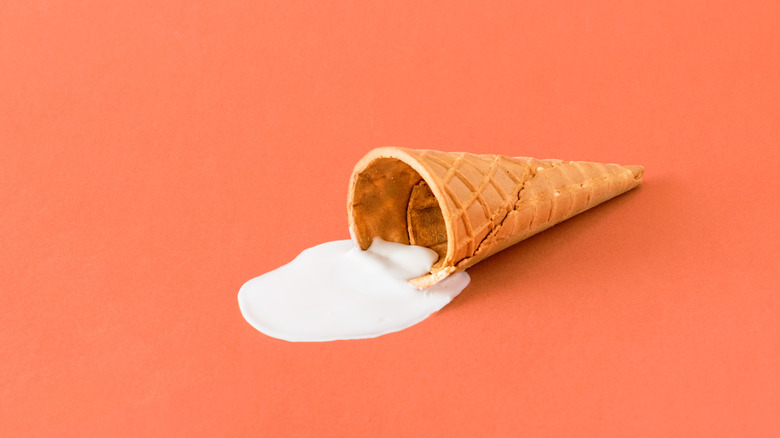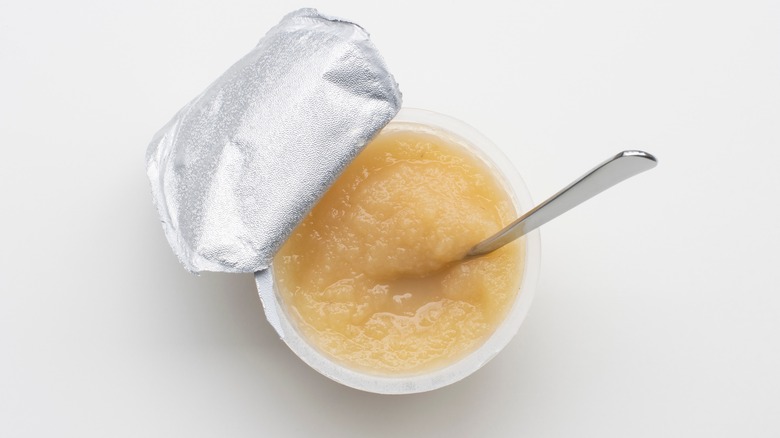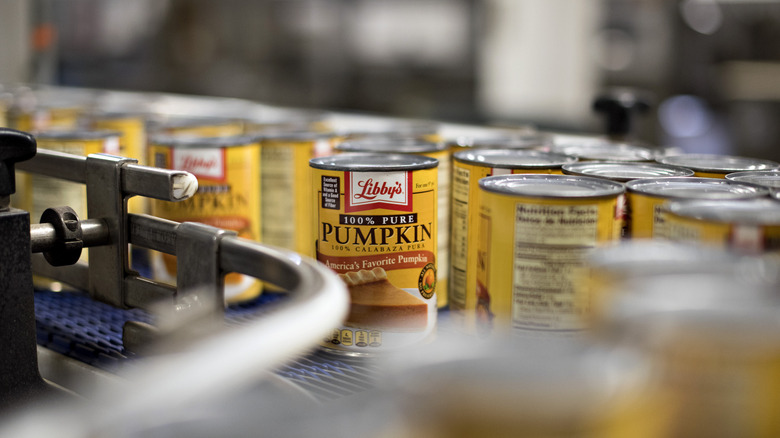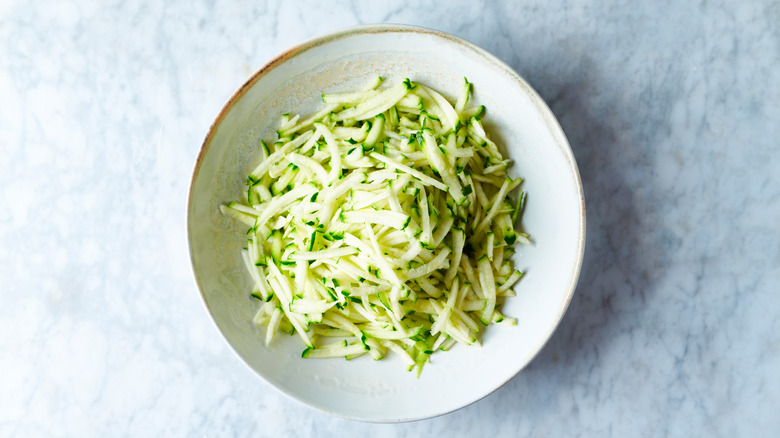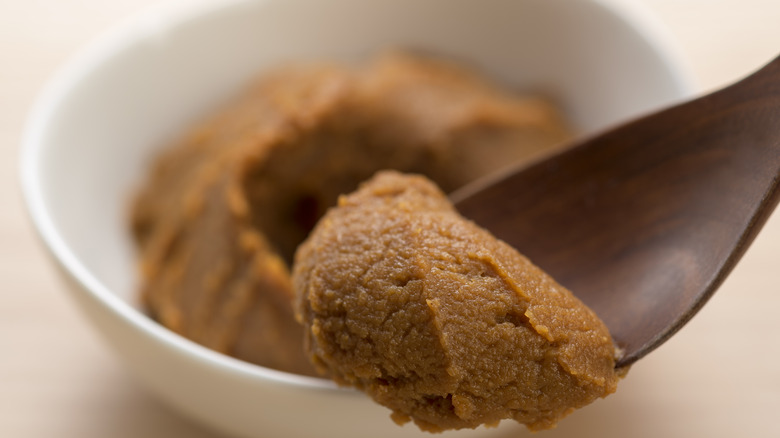20 Unexpected Ingredients That Will Elevate Homemade Cake
We may receive a commission on purchases made from links.
No dessert epitomizes home baking like the cake. There are hundreds of different types of cake across the globe including the classic American red velvet cake, plush angel food cake, or uniquely shaped Bundt cake flavored with candied fruits or covered in streusel. Many cake recipes are informed by regional traditions and ingredient availability in certain regions, but there is an undeniably deep connection between the cake symbolizing celebration, special occasions, and, above all, deliciousness.
There are always some common mistakes made with baking cakes, like trimming your cakes while they're still warm or confusing leavening agents like baking soda and baking powder, but one of the biggest is when bakers don't step outside the box and try new ingredients and flavors. Here are some of the additions you need to include in your next homemade cake recipe to both impress your guests and take your baking skills to the next level.
Brown butter
Any proficient baker knows how crucial fat is to make a moist, soft crumb structure. Many cake recipes include either oil or butter as the fattening agent, but you can take your cake to the next level by substituting brown butter. The swap will add toffee-like and caramelized notes to your cake, and while preparing it may require a couple of extra steps in the kitchen, it will be worth it.
Traditionally, brown butter is made by heating butter in a skillet over medium heat until small brown flecks form. But if you're in a time crunch, you can still enjoy the magic of brown butter in your cake by making it in the microwave. You'll need to place the butter in a covered, microwave-safe container and nuke it for a minimum of three minutes. You should check the butter at 30-second intervals to ensure it doesn't burn. When the butter starts to emit a nutty aroma, it is ready for you to remove from the microwave and add to your cake.
Bacon
It's smoky, savory, the staple of breakfasts across America — and it can be the ingredient you add to cake to make it all the more extravagant. It's bacon! The salty, meaty strips can add an element of saltiness that contrasts the sweetness in vanilla and apple cake. Take a cue from upscale fried chicken chain Yardbird and bring bourbon and chocolate into the mix. But our personal favorite is the classic pairing of bacon and maple. You can make candied bacon to go on top of cakes (or cupcakes) or go the direct route of adding cooked bacon to your cake base before you put it in the oven. To infuse more flavor, use the leftover bacon grease and sugar to candy pecans or walnuts.
Regardless of how you use bacon to increase the flavor complexity of your cake, you should always stick to cooked bacon — it maintains its texture and won't disrupt the balance of fat in your cake.
Sour cream
Sour cream has been a baker's secret ingredient for years. This type of cream, which is a particular favorite in Eastern Europe, is made with a bacteria culture that produces a distinct tanginess. However, using sour cream isn't necessarily about improving flavor. While it will impart a subtle tang, adding ½ cup to a classic pound cake recipe will ensure the crumb structure is "so moist and tender," according to recipe developer Jessica Morone. This is especially important for a cake that can easily become dry and crumble into tiny pieces after it's cut.
Pound cake isn't the only type of cake that benefits from the inclusion of sour cream. The addition can make a devil's food cake or chocolate fudge cake especially decadent too.
Instant pudding
The next ingredient coming to save your cake can be found in the same aisle as your cake ingredients. Instant pudding can provide an added layer of moisture and creaminess to your cake. You can use whatever pudding flavor suits your cake. For example, use a lemon pudding for a light citrus flair or stick to a chocolate pudding for an easy Oreo cake recipe.
When working with instant pudding, you won't have to worry about preparing the pudding ahead of time. Add your instant pudding mix to the rest of your dry ingredients and prepare your cake as normal. If you're using a boxed cake mix, you can use a 1-to-1 ratio of boxes of pudding to boxed cake mix.
Soda
You may be familiar with Cracker Barrel's famed Coca-Cola cake, but if you want to enjoy the decadent dessert, it's easy enough to make at home. While many people stick to using cola (Pepsi or similar brands work too) to add moisture to their cake, other folks substitute Dr. Pepper or root beer instead. These dark colas pair well with chocolate cakes and dense chocolate frostings.
While you can incorporate soda into a layered cake with many complicated ingredients, you can also stick to making two ingredient cake by combining a box of cake mix with 12 ounces of club soda — no oil, eggs, or water involved. Regardless of the type of soda you choose to add to your cake, you should always use the full-sugar version — not the diet varieties.
Buttermilk
Buttermilk is no stranger to baking. This tangy dairy product is an important component of a light, crumbly cake. Besides tenderizing the crumb structure of the recipe, the tanginess of the buttermilk also balances the sweetness of the cake and keeps its flavor in check. If you don't have buttermilk on hand, you can use powdered buttermilk mixed with water or milk to get the same texture as its liquid counterpart.
This an addition that doesn't discriminate as far as what flavors it works well with. You can add a splash instead of milk in a spice cake since the buttermilk can tame the warmth of the cloves and the cinnamon. You can also add a bit of buttermilk to a dense chocolate cake to help lighten it up a bit.
Sauerkraut
Sauerkraut in a cake? That isn't a typo. It turns out this is the ingredient that will change your chocolate cake forever since adding sauerkraut helps keep things moist and fudgy. Like a sour cream substitute, the fermented cabbage's tangy flavor balances the chocolate's richness. And the best part is that your dinner guests likely won't be able to taste the sauerkraut since baking neutralizes the taste. One of the only downsides of using this method is that you may find tiny pieces of cabbage suspended in the cake batter like coconut flakes.
You can add the sauerkraut directly to the cake batter after the rest of the dry and wet ingredients and before baking. When working with a stringy vegetable like cabbage, it's important to mix thoroughly; no one wants to bite into a whole mass of sauerkraut in the middle of the cake.
Coffee
Coffee is often used in baking to amplify the flavors of chocolate. Not only does the bitterness of the coffee balance out the sweetness of the dessert, but the caffeine addition also has an important impact on the neurotransmitters of the brain when combined with sweet desserts. Caffeine can decrease the response of sweetness on your tastebuds, effectively causing you to continue reaching for more cake.
There are numerous ways you can add coffee to your cake as both a moisturizing agent and as a flavor enhancer. For a concentrated coffee flavor, you'll want to stick with the strong-brewed espresso or, worst case scenario, black coffee. You can also use espresso powder; it dissolves without fault, is shelf-stable, and only a teaspoon or two in your favorite chocolate recipe can cause your tastebuds to sing their chocolatey praises.
Mashed potatoes
Mashed potatoes — in a cake? Although you may think of the humble spud as more of a Thanksgiving side dish, mashed potatoes can elevate your chocolate cake by locking in moisture. This is because, on a molecular level, potatoes contain about 80% water; the rest is potato starch — another common ingredient you'll see in baked goods like brownies and cakes. Potato starch is an excellent ingredient to bind the ingredients in a cake and can be especially useful for folks working with vegan or egg-free cake recipes. Using fluffy mashed potatoes offers the benefits of both added moisture and binding.
If you want to add mashed potatoes to your cake, you'll first need to peel, boil, and rice the potatoes to get the consistency just right. You should avoid adding any butter or cream to the potatoes; this may set off other imbalances in your cake.
Ricotta
Ricotta is a soft, mild cheese often used for cannolis or stuffed pasta. Its texture is very wet and moist since ricotta is the byproduct of combining an acid with milk and straining out the whey. The flavor is not especially pungent, which makes this ingredient perfect for sweet applications like cake.
The cheese is often used in cakes with fruit and citrus like a ricotta almond peach crumble cake. This is because the mild flavor of the ricotta is amplified with the addition of lemon and orange, as well as chocolate. You can transform a box of cake mix by substituting the ricotta for the oil in your recipe. You can also mix ricotta with cream cheese for a decadent cheesecake filling.
Alcohol
Alcohol is an important flavoring agent for recipes like Jamaican rum cake, but it can also be used to highlight other flavors in your baked goods. According to Betty Crocker, adding alcohol to your baked goods can complement flavors and alter the texture of your recipe. You can substitute alcohol for extracts, but you should always start with small increments of alcohol rather than pouring half a bottle into the recipe. Between 5% and 85% of alcohol remains in a baked good after baking depending on the cooking time, but you can add more boozy flavor to your cake by including the alcohol in your frosting or garnish.
Betty Crocker recommends choosing alcohol that you both like to drink and will complement the flavors you already have. Bourbon with vanilla and red wine with chocolate are two of the most utilitarian pairings for cakes.
Maple syrup
Keep it sweet with maple syrup! Maple syrup is an alternative sweetener to granulated sugar but is also a flavorful addition to ginger cake, maple cake, and some kinds of fruit cake. You should use ¾ cup of maple syrup per each cup of white, granulated sugar (via the Vermont Sugar Makers Association). You should also plan to add a scant amount of baking soda when you make this substitution to help give the cake a bit more rise. Another precaution you'll need to take is the heat of your oven while your cake is baking; maple syrup has a quicker caramelization time than a cake made with white sugar alone.
We love the organic taste of maple syrup, especially in a recipe like nutty coffee cake. A couple of tablespoons of maple syrup complement the flavor of the almond flour used in the cake batter while the syrup provides a bit of color to the cake.
Honey
Honey has a slightly higher viscosity than maple syrup, thus making the ingredient a sweet, sticky addition to your favorite cake recipe. Not only does honey have a higher sweetness per ounce than granulated white sugar, it is also a much more effective binder because of its viscosity.
The flavor of the honey depends on the flowers the bees pollinate. You can find orange blossom honey, which pairs well with citrus cakes, or acacia honey which takes on a more vanilla flavor. Regardless of the flavor, you should stick to reducing the sweetness in your recipe by about 25% to account for the sweetness. If you are using more than a cup of honey in your recipe, you may have to reduce the liquid by ¼ cup or add a few tablespoons of flour to soak up the excess liquid.
Mayonnaise
Mayonnaise is made of two primary ingredients: eggs and oil. So if you think of the spread on those basic terms, it seems less of a burger condiment and more of a vital component to a soft, decadent cake. Besides the fatty aspect of the eggs and the oil, most conventional mayonnaise also contains vinegar. The vinegar in the mayonnaise curbs the sweetness of the cake and alters the texture of its crumb to make it more decadent and plush.
You can add a couple of tablespoons of mayonnaise to your boxed or homemade cake batter to reap the benefits of the condiment. This kitchen hack works best with chocolate cakes, which can easily become dense and stodgy. And for the folks with something against mayonnaise — you won't have to worry about the taste of the divisive condiment in your favorite cake recipe.
Greek yogurt
Greek yogurt is a utilitarian and creamy ingredient to include in cakes. You can add a scoop to keep pound cake moist or substitute butter in a chocolate cake recipe. Plus, Greek yogurt is strained so it typically does not contain as much sugar as conventional yogurts. Besides being less sweet, the tanginess of the yogurt can help activate the baking soda in the cake and kick off the leavening reaction that keeps the cake light and fluffy.
The creaminess of the yogurt won't evaporate when you bake the cake, which means that your cake will be left deliciously moist. Whole-milk, full-fat Greek yogurt will give you the most creaminess. You should also aim to use unsweetened Greek yogurt with no added fruits or flavors.
Melted ice cream
There's no reason to cry over melted ice cream, especially when you need to bake a cake. You can melt down your favorite kind of quality ice cream (avoid varieties with emulsifiers or stabilizing agents for this hack) to add a bit of flavor to your next cake recipe. The ice cream has the same thick, creamy consistency as whipping cream — just with the benefit of added sugar. You can substitute equal parts melted ice cream for its thick, unsweetened lookalike. You should be advised, though, to stick with vanilla or chocolate rather than a type of ice cream with toppings in it.
Since the texture resembles crème anglaise, you can rest assured knowing that using melted ice cream (or something similar) has been a longstanding ingredient used in baking.
Applesauce
Applesauce is an important ingredient for making vegan cakes since it retains moisture in the cake and helps promote a sweet, mild flavor. The applesauce traps some of the carbon dioxide produced from the baking soda or baking powder in the cake batter. When the carbon dioxide is retained, the texture of the batter is much airier than without the applesauce. It also prevents the protein in the flour from completely combining with the wet ingredients, thus ensuring that your cake won't end up with a rubbery and stodgy texture.
Try substituting equal parts applesauce for oil in a cake recipe. You'll get less saturated fat than using oil or butter, plus a bit of sweetness from the apple. Despite its fruity origin, applesauce can be used in various types of cakes including vanilla, chocolate, or spice cake. Don't forget to add a cream cheese frosting to your applesauce cake recipe.
Pumpkin puree
Pumpkin puree resembles the texture of other ingredients we've examined — like applesauce or mashed potatoes. And even if you incline to include pumpkin puree in recipes that require a ton of autumnal flavors, like a pumpkin butter cake or a pumpkin cheesecake, you should consider adding canned pumpkin puree to other cakes where pumpkin isn't always the shining flavor. This ingredient is moist and can help regulate the consistency of your crumb, similar to applesauce.
If a recipe calls for applesauce, you can substitute the same amount of pumpkin puree (not pumpkin pie filling — this is a different ingredient). Pumpkin is not a catch-all for sweeteners either, so you should plan to add sugar to your cake as well rather than just relying on the sweetness of the puree alone.
Vegetables
Adding grated vegetables to your cake does more than give you the impression that it's "healthy." Grated carrots, zucchini, beets, or yellow squash can help add additional moisture as well as provide some contrasting textures. If you're adding squash or zucchini to the cake batter, you'll want to grate the peeled vegetable down finely and squeeze out all the moisture with a kitchen towel before adding it to the batter. When these watery vegetable cook, they release a lot of moisture that can alter the structure of your cake — for worse.
Beets are a common color enhancer in cake recipes. You should first roast the beets in your oven to soften them before peeling them and adding them to a food processor. You should use gloves when handling roasted beets since the vegetable can color more than just your red velvet beet cake.
Miso
Making magic in the kitchen is all about finding the balance between salty and sweet flavors. Miso is a fermented soybean paste that aids in two important flavors: salty and umami. Although the paste itself is very strong and can stand alone, you can add miso to baked goods for a subtle flavor boost. There are three major kinds of miso: shiro (a slightly sweet mild miso), red (a stronger, saltier flavor), and awase (a mixture of red and white miso with a happy-medium saltiness). Miso pairs well with several different common flavors in baking including apples, bananas, chocolate, and caramel.
Adding two tablespoons of miso per cup of flour used in a recipe should do the trick. You should modify the recipe to eliminate any other salts in the recipe (since miso is salty enough on its own) and whisk the paste in with the other wet ingredients to prevent the consistency from becoming too gritty.
